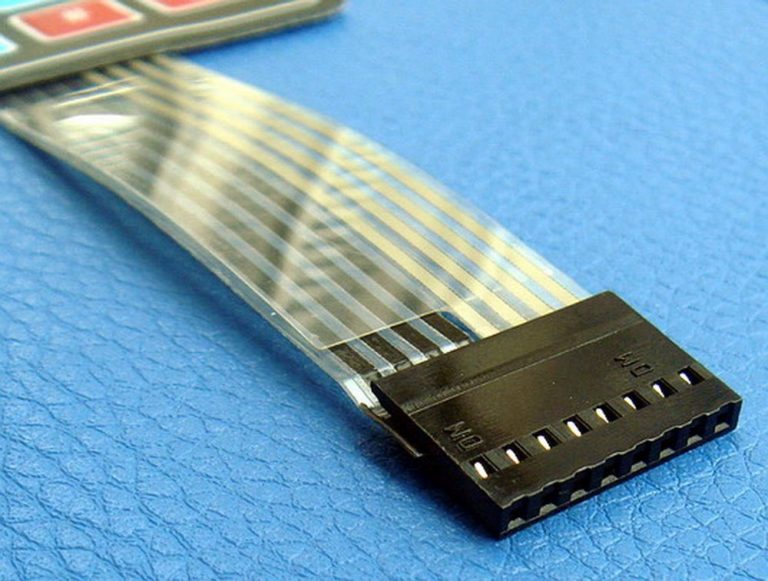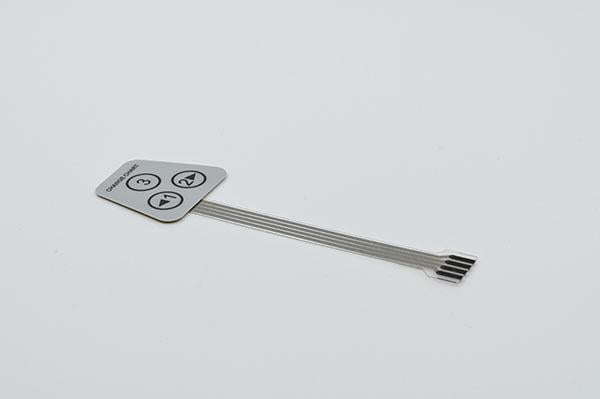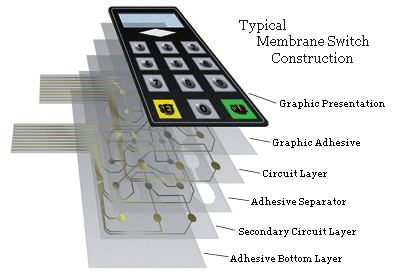It’s important to evaluate the capabilities of any membrane switch manufacturer before starting a project.
It’s important to evaluate the capabilities of any membrane switch manufacturer before starting a project.
Blog Article
All About Membrane Switch Over: Comprehending Its Layout and Capability
When you think regarding the control interfaces in modern-day tools, membrane buttons usually come to mind. Allow's discover what sets membrane layer changes apart from other control systems.
What Are Membrane Buttons?

Membrane switches can additionally be tailored concerning form, size, and graphics, enabling makers to develop special user interfaces tailored to details items. In general, membrane buttons play a considerable role in improving user experience across a large variety of applications.
Just How Membrane Changes Job
When you press a key on a membrane layer button, it turns on a straightforward yet effective device. The top layer, frequently made from flexible product, presses down onto a conductive layer under it. This action bridges the space between conductive traces, completing an electrical circuit. As quickly as the circuit shuts, it sends a signal to the tool's controller, which analyzes your input.
You'll notice that the responsive feedback varies based upon the button style, providing either a soft click or an extra pronounced reaction. Once you launch the key, the membrane go back to its original setting, resuming the circuit and quiting the signal. This procedure occurs virtually instantly, guaranteeing a responsive user experience.
Membrane switches are preferred due to their durability and resistance to dust and wetness, making them suitable for various applications, from family home appliances to clinical tools. Understanding this operation aids you appreciate their prevalent usage.
Trick Components of Membrane Layer Switches
Recognizing the key elements of membrane layer switches is fundamental for comprehending their functionality and style. At the core, you'll discover the graphic overlay, which provides the visual user interface for users. Under that, there's a spacer layer that separates the circuit layers, making certain that they do not make contact until pressed. The circuit layer is where the magic occurs; it is composed of conductive traces that complete the circuit when you push the button. An additional vital element is the sticky backing, allowing the switch to stick to surface areas safely. The safety layer shields versus ecological aspects and wear, extending the button's life-span. Each element plays a substantial duty in making certain trustworthy performance and customer communication. By understanding these parts, you'll acquire understanding right into how membrane layer changes operate and their value in different applications.
Products Utilized in Membrane Change Design
The performance and sturdiness of membrane changes greatly rely on the materials made use of in their style. You commonly experience polyester and polycarbonate as key substrates because of their excellent toughness and flexibility. These products resist scrapes and chemicals, making them perfect for demanding environments.
The conductive layers frequently make use of silver or carbon, picked for their dependability and conductivity. membrane switch manufacturer. Silver gives superior efficiency, while carbon is an economical alternative. For the overlay, you might consider a matte or shiny finish, depending on your visual requirements and user experience
Make certain to pick adhesives that hold up against environmental factors like temperature and humidity. Selecting the best you can find out more products will certainly ensure your membrane layer switch stands the test of time.
Layout Factors To Consider for Membrane Switches
While designing membrane layer switches, it's vital to take into account different elements that influence their capability and customer experience. Begin by concentrating on the layout and switch dimension; make specific they're user-friendly and simple to browse.
Don't overlook the graphic layout; clear labeling and color comparison are substantial for presence. Verify your style fits ecological elements, like dampness or temperature variations, which could impact performance. Ultimately, remember the value of testing prototypes with genuine individuals to collect comments and make necessary adjustments. This repetitive procedure aids you fine-tune the style, validating it satisfies both useful and aesthetic requirements properly. By thoroughly considering these components, you'll develop a membrane switch that boosts usability and contentment.
Applications of Membrane Buttons
Membrane layer buttons are functional components found in numerous applications, from industrial devices to customer electronics. additional info You'll see their effect in makers that call for resilient user interfaces and in devices that take advantage of smooth layouts. Understanding these applications helps you appreciate the capability and practicality of membrane switches in everyday innovation.
Industrial Devices Use
When you're aiming to improve the performance of industrial devices, membrane switches supply a dependable solution that incorporates resilience with user-friendly layout. These switches are ideal for harsh environments, supplying resistance to dirt, moisture, and chemicals. You'll locate them in control panels for manufacturing machines, cooling and heating systems, and clinical gadgets, where accuracy and responsiveness are essential. Their low account means they fit effortlessly into numerous equipment, saving beneficial area while maintaining convenience of usage. With adjustable graphics and backlighting options, you can develop an intuitive user interface for operators, enhancing performance and safety and security. And also, their lengthy lifespan lowers maintenance expenses, making them a wise financial investment for your industrial applications. Embrace membrane buttons to enhance your procedures and improve general performance.
Customer Electronics Integration
In the domain of consumer electronic devices, membrane layer switches play an essential duty in boosting customer interaction and tool functionality. Membrane buttons also guarantee toughness and resistance to dirt and moisture, expanding the lifespan of your electronic devices. By picking membrane switches, you boost not simply the capability but additionally the design of your gadgets, making day-to-day communications smooth and pleasurable.
Benefits and Disadvantages of Membrane Layer Switches
While membrane layer switches provide an array of advantages, they additionally include some drawbacks that you need to consider. One substantial advantage is their compact design, making them suitable for space-constrained applications. They're also cost-efficient, supplying a long lasting service with a reduced production expense. In enhancement, their seamless surface is easy to clean, boosting health in atmospheres like healthcare facilities.

Nevertheless, there are disadvantages. Membrane layer switches can have a shorter life expectancy view website compared to mechanical switches, especially under heavy use. They can additionally be much less responsive, which might affect customer feedback during operation. Moreover, if harmed, repairing them can be challenging and often needs total replacement. Ultimately, their level of sensitivity to extreme temperature levels and ecological problems might limit their performance in certain setups. Stabilizing these pros and cons will certainly help you determine if membrane layer switches are the ideal suitable for your task.
Frequently Asked Concerns
How Much Time Do Membrane Layer Switches Over Usually Last?
Membrane changes typically last in between 5 to ten years, depending upon usage and ecological problems. You'll wish to evaluate variables like wear, exposure to wetness, and temperature level changes to assess their longevity effectively.
Can Membrane Changes Be Custom-made for Specific Layouts?
Yes, you can customize membrane layer buttons to fit specific designs (membrane switch manufacturer). You'll have the liberty to select colors, shapes, and designs that match your job's requirements, guaranteeing they blend flawlessly with your total aesthetic
What Is the Expense Range for Membrane Switch Over Manufacturing?
The cost range for membrane switch manufacturing normally drops between $1 and $10 per unit, relying on factors like design complexity, amount, and products. You can get quotes from manufacturers to discover the very best choice.

Are Membrane Layer Switches Over Water Resistant or Immune?
Membrane buttons can be created to be waterproof or resistant, depending upon products used and building methods. If you require them for wet settings, guarantee you define those demands during the layout procedure.
Just How Do Membrane Layer Switches Over Compare to Conventional Buttons?
Membrane layer buttons are generally thinner and a lot more versatile than standard switches, offering a streamlined design. They're commonly easier to clean and integrate, but may not provide the tactile responses you're utilized to with mechanical alternatives.
Final thought

Report this page